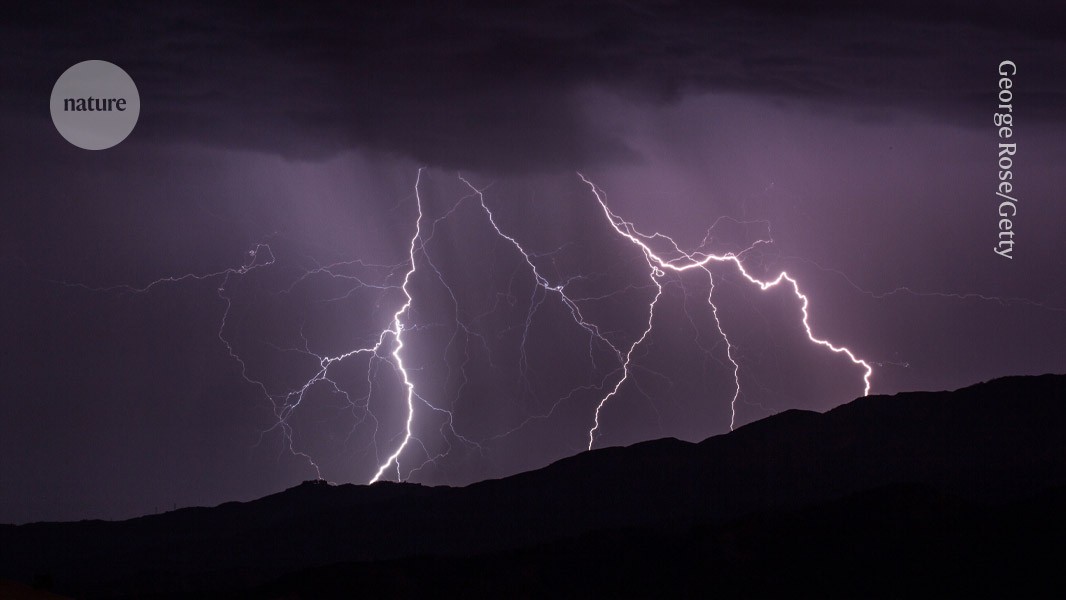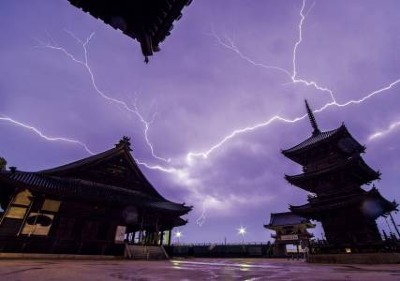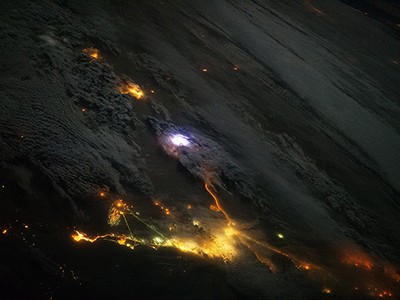Physicists have discovered a new form of γ-ray radiation that emerges from tropical thunderstorms — and shown that such invisible bursts of energy are more common on Earth than previously thought. The phenomenon is described1,2 in two studies published in Nature on 2 October.
“These papers are game-changers for the field,” says Joseph Dwyer, a physicist at the University of New Hampshire in Durham. The findings added a new animal to the “zoo” of high-energy phenomena seen in storms, he adds. “These two papers are very important and will make a big splash in the thunderstorm and lightning community.”
Mystery gamma rays could help solve age-old lightning puzzle
More energetic than X-rays, γ-radiation is found around black holes, and other extreme cosmic environments. It is also seen on Earth, and its origins could help to explain what initiates lightning, which often follows these events. The trigger for lightning has remained a mystery for centuries because observations struggle to find electric fields strong enough to initiate it.
Cold war plane
A group led by scientists at the University of Bergen in Norway made the discoveries using instruments on a high-altitude ex-cold-war spy plane, converted by NASA. The single-pilot aircraft flew as close as 1.5 kilometres above storms in the Caribbean and Central America, during ten flights in 2023.
Scientists had previously documented two kinds of γ-ray phenomenon in storms — seconds-long glows and higher-intensity bursts known as terrestrial γ-ray flashes (TGFs), which last just millionths of a second. The mechanisms behind either are not well understood, nor is their relationship.

Illustration of an aircraft flying above thunderclouds to monitor gamma-ray glows, coloured in purple.Credit: The ALOFT team/Mount Visual (CC BY 4.0)
Detectors aboard the plane spotted both types of radiation appearing in the same storm. They saw around 500 glows and 130 TGFs — many more than they had anticipated. And the glows were not as expected. Rather than a steady hum, the radiation surged up and down in intensity, bubbling across a region around 100 kilometres wide, like a boiling pot of water.
Both kinds of radiation have rarely been observed before. “We saw that, over these tropical storms, they are really very common,” says Martino Marisaldi, a co-author and high-energy atmospheric physicist at the University of Bergen.
But the team also saw 24 instances of a new kind of γ-ray radiation: a flickering flash. These pulses grew out of glows and lasted as long as 250 milliseconds, with traits in between that of the other two types of radiation. During each flash, radiation spiked around a dozen times over around one-tenth of a second.
Electron soup
This newly observed radiation could be key to understanding how γ-rays come about on Earth. Scientists have known since the 1980s that storms can emit γ-rays. It happens when electric fields of around 100 million volts develop inside churning clouds, creating a natural particle accelerator. When cascades of electrons, zooming at close to light speed, collide with air molecules, they release γ-ray radiation. But where so many of these electrons come from remains uncertain.
Space-station cameras reveal how thunderstorms trigger gamma-ray bursts
Dwyer says that the latest data fit with a model that he introduced in 2003, in which high-energy radiation sometimes creates positrons, the antimatter counterparts to electrons. These would zoom in the opposite direction to electrons, in a cycle that creates fresh particle avalanches, which might explain the quantity of γ-rays and the flicker, says Dwyer.
That’s an “attractive possibility” worth exploring, says Teruaki Enoto, an astrophysicist studying extreme natural phenomena at the RIKEN Hakubi laboratory in Saitama, Japan.
Lightning strikes happened after most glows and flickering flashes, and at the same time as TGFs. Models suggest that the electron avalanche could partially discharge the cloud, causing the field to grow elsewhere and initiate lightning, adds Dwyer.
The exciting findings will accelerate future observations of these events, says Enoto. “Kudos to the team,” he says.




